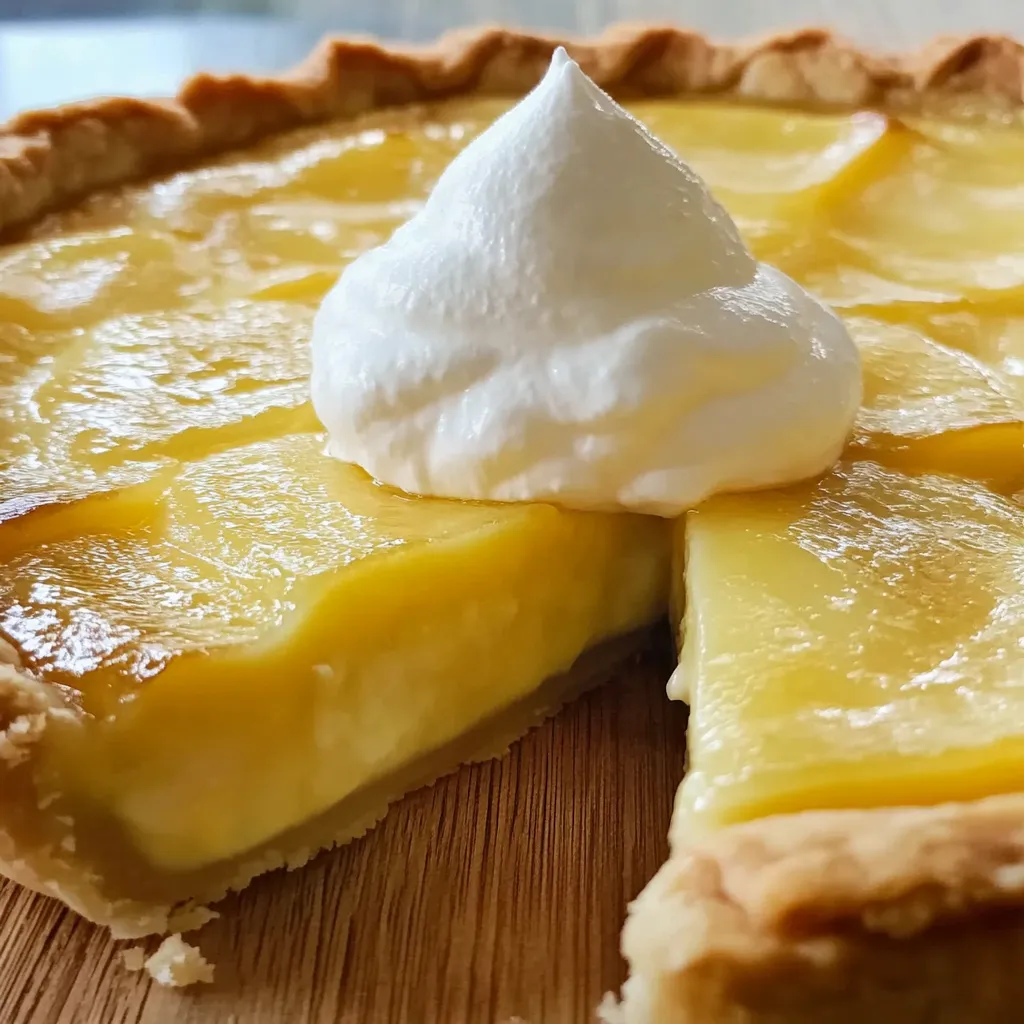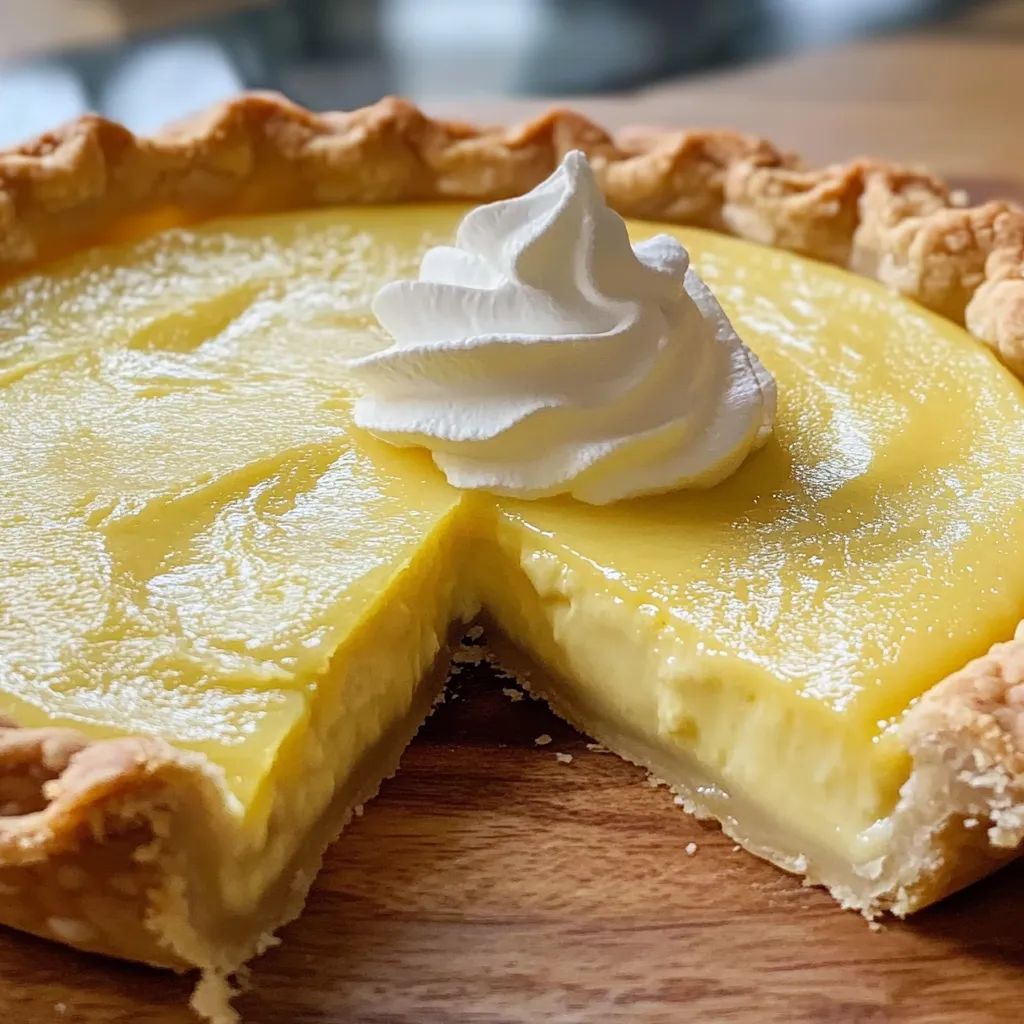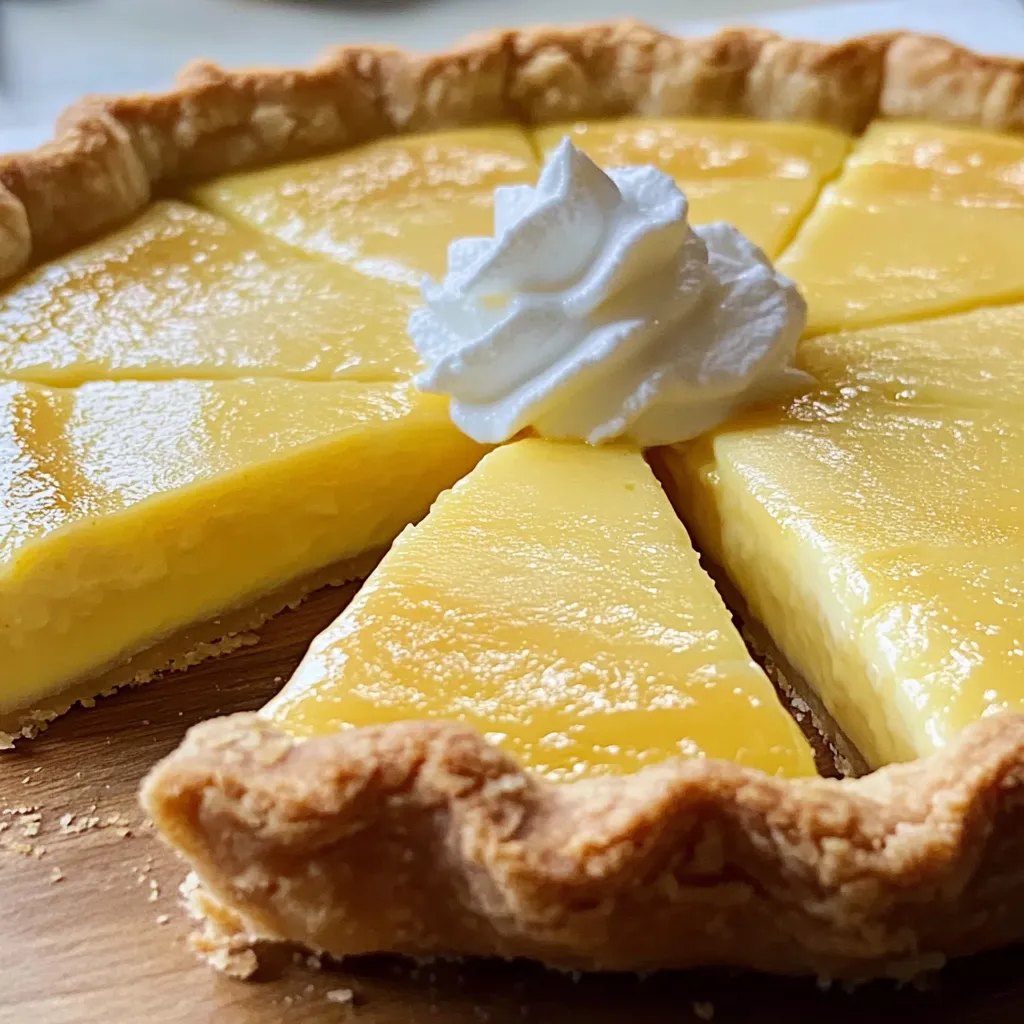 Pin it
Pin it
Silky smooth custard with delicate hints of vanilla and warming nutmeg nestles into a flaky, buttery crust in this classic Pioneer Woman Egg Custard Pie. This timeless dessert transforms humble ingredients into something truly magical—a perfectly balanced treat that's simultaneously rich yet light, sweet yet subtle, and comforting yet elegant.
I first made this pie for a holiday gathering, hoping to recreate the custard pie my grandmother made throughout my childhood. The moment I pulled it from the oven, the kitchen filled with that distinctive aroma of warm vanilla and nutmeg that instantly transported me back to her farmhouse kitchen. When my father took his first bite, his eyes widened with recognition and joy—it was exactly as he remembered from his own childhood. Now this pie has become our family's connection to generations past, a dessert that bridges time through shared taste memories.
Beautiful Ingredient Harmony
- Unbaked Pie Crust: Creates the perfect flaky foundation that contrasts beautifully with the silky custard
- Granulated Sugar: Provides just the right level of sweetness without overwhelming the delicate custard flavors
- Farm-Fresh Eggs: Form the structural backbone of the custard while contributing rich flavor and golden color
- Pure Vanilla Extract: Adds warm, aromatic sweetness that enhances the custard's complexity
- Ground Nutmeg: Introduces subtle warmth and spice that elevates the entire dessert
- Whole Milk: Creates the perfect creamy consistency while allowing the vanilla and nutmeg to shine
- Additional Nutmeg: A final dusting creates both visual appeal and intensifies the signature flavor
Creating Custard Perfection
- Prepare Your Foundation
- Preheat your oven to a precise 350°F while lightly coating a 9.5-inch pie dish with nonstick spray. This careful preparation ensures your pie will release cleanly when served. Gently place your unbaked crust into the dish, pressing it against the sides and bottom to create a uniform shell that will contain the custard beautifully.
- Blend The Base Ingredients
- In a large mixing bowl, whisk together room temperature eggs, sugar, vanilla extract, and nutmeg. The extended whisking time of two full minutes is critical—this incorporates air and fully dissolves the sugar, preventing any graininess in the finished custard.
- Incorporate The Milk
- Gradually add room temperature milk to your egg mixture, whisking continuously to create a uniform blend. The continuous whisking prevents the eggs from scrambling when they meet the milk and ensures perfect custard texture. The additional three minutes of whisking might seem excessive, but this patience creates the silkiest result.
- Assemble With Care
- Pour the custard mixture slowly into the prepared pie shell, filling it just below the rim to prevent any overflow during baking. The careful filling preserves the integrity of your crust and prevents a messy oven. Sprinkle the additional nutmeg evenly across the surface, creating both visual appeal and intensifying the signature flavor.
- Bake To Perfection
- Place the pie in your preheated oven and bake for 75 minutes, or until the custard is set with just a slight jiggle in the center when gently nudged. This precise baking time allows the eggs to set properly while preventing the custard from becoming rubbery from overbaking.
- Rest For Best Results
- Allow the pie to cool completely on a wire rack before slicing. This crucial resting period allows the custard to set fully, ensuring clean slices and perfect texture. The patience required during cooling rewards you with the ideal consistency.
- Serve With Simplicity
- Present slices of this beautiful pie on their own or with minimal accompaniments that won't overpower its delicate flavor. A small dollop of lightly sweetened whipped cream is all that's needed to complement this dessert's inherent perfection.
 Pin it
Pin it
My family particularly loves this pie served slightly chilled rather than at room temperature—the coolness seems to intensify the vanilla notes. I've found that adding just a tiny pinch of salt to the custard mixture enhances all the other flavors without making the pie taste salty. During autumn gatherings, I sometimes substitute maple extract for half of the vanilla, creating a seasonal variation that pairs beautifully with Thanksgiving dinner.
The first time I served this pie to my in-laws, my normally reserved father-in-law requested a second slice before finishing his first—the ultimate compliment for any home baker. What makes this recipe truly special is how it transforms pantry staples into something that feels luxurious and special, proving that sophisticated desserts don't require exotic ingredients.
Elegant Accompaniments
This delicate custard pie pairs beautifully with thoughtfully chosen accompaniments that enhance its subtle flavor profile. Serve with a dollop of lightly whipped cream infused with just a hint of bourbon for a sophisticated touch that complements the vanilla notes. Fresh berries macerated with a touch of sugar create a vibrant, acidic contrast to the creamy custard. For special occasions, offer a small glass of chilled Sauternes or other dessert wine that echoes the custard's sweet richness. During fall and winter months, a warm apple compote spiced with cinnamon makes a seasonal partner that highlights the pie's warming nutmeg notes. For coffee lovers, a freshly brewed cup of medium-roast coffee creates the perfect bitter counterpoint to the sweet custard.
Flavor Variations
Transform this versatile base recipe by exploring subtle variations that maintain the custard's delicate character while introducing new flavor dimensions. Create a citrus-infused version by adding fresh lemon or orange zest to the custard mixture, brightening the flavor profile with aromatic oils. For warm spice lovers, enhance the traditional nutmeg with a pinch of cinnamon and clove for a more complex spice profile reminiscent of chai tea. Introduce a tropical twist by substituting coconut milk for half the whole milk and adding a teaspoon of coconut extract. For a sophisticated adult version, add a tablespoon of dark rum or bourbon to the custard before baking, creating subtle caramel undertones. During maple sugaring season, replace a quarter cup of the sugar with pure maple syrup for a woodland-inspired variation.
Preservation Perfection
Maintain the pristine quality of this delicate dessert with proper storage techniques that preserve its texture and flavor. Cover leftovers carefully with plastic wrap, pressing it directly onto the custard's surface to prevent a skin from forming, then refrigerate for up to four days. Allow refrigerated slices to come to cool room temperature before serving to experience the full flavor spectrum. This pie is best consumed within the first two days when the contrast between the crisp crust and creamy filling is at its peak. Due to its delicate egg structure, this custard pie does not freeze well, so it's best to plan for fresh consumption rather than long-term storage. For the ultimate freshness, consider making a smaller pie if serving fewer people rather than storing leftovers.
I'll never forget the summer afternoon I served this pie at our family reunion, where five generations gathered around our farmhouse table. My 92-year-old great-grandmother took one bite, closed her eyes, and declared it identical to the custard pie her mother made during the Great Depression—a recipe that stretched humble ingredients into something that felt like a celebration. There's something profoundly moving about recreating flavors that connect us to our past, dishes that remind us of kitchens long gone and hands that lovingly prepared food for previous generations. This pie isn't just delicious; it's edible heritage, a way to taste memories and share them with those who never had the chance to sit at those earlier tables. The simple pleasure of creating something so timelessly delicious from basic pantry ingredients feels like a connection to the wisdom of generations of home cooks who came before us.
 Pin it
Pin it
Frequently Asked Questions
- → Why do ingredients need to be at room temperature?
- Room temperature eggs and milk blend more smoothly and help prevent curdling, resulting in a silkier custard texture.
- → How do I know when my custard pie is done baking?
- The pie is done when the edges are set but the center still has a slight jiggle when gently shaken. It will continue to set as it cools.
- → Can I make this pie ahead of time?
- Yes! This pie actually tastes better when made a day ahead and refrigerated overnight, allowing the flavors to develop fully.
- → What if I don't have whole milk?
- For best results, use whole milk for richness. In a pinch, you can use 2% milk, but the custard won't be quite as creamy.
- → Why did my custard pie crack on top?
- Cracks usually happen from overbaking or baking at too high a temperature. Make sure your oven temperature is accurate and remove the pie while it still has a slight jiggle.
- → Can I use a pre-made pie crust?
- Absolutely! A store-bought refrigerated pie crust works perfectly for this recipe and saves time.
